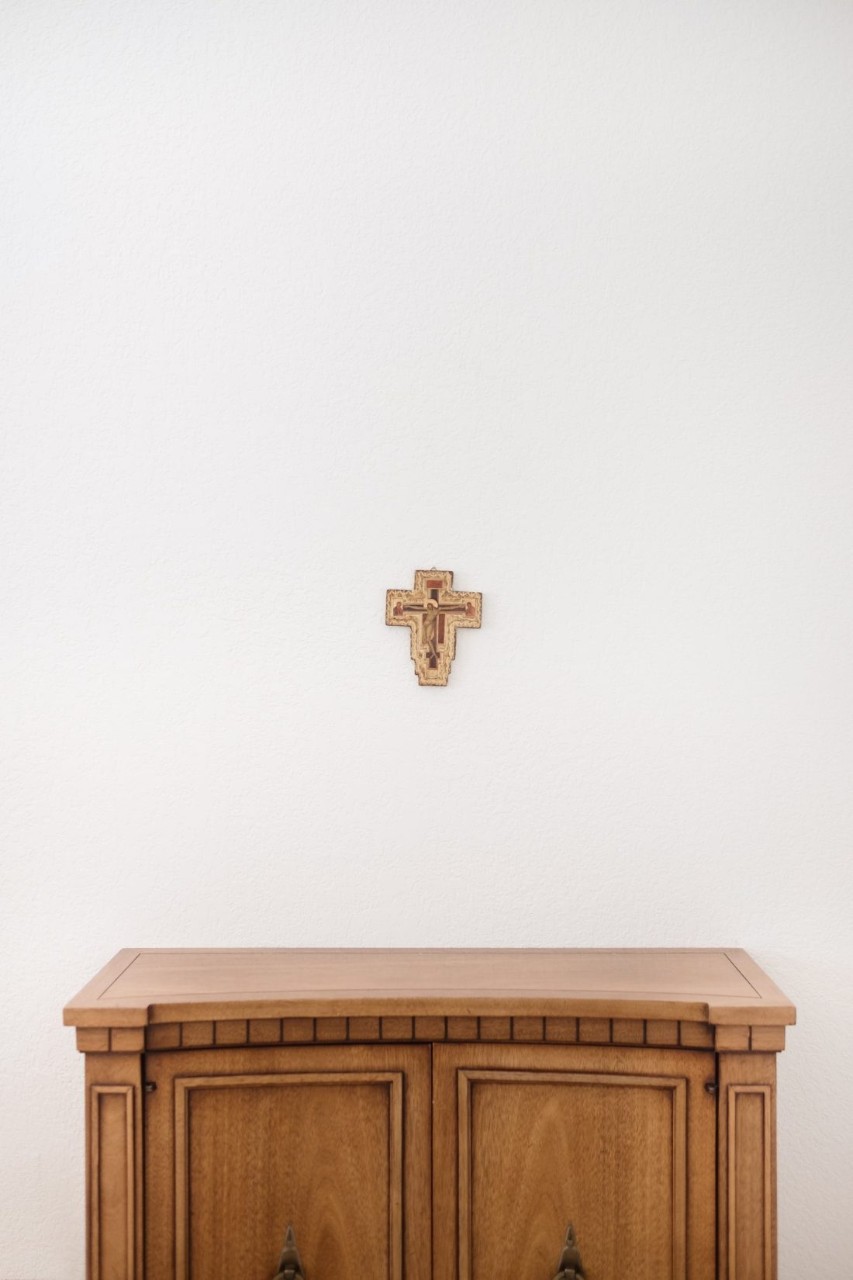
“A picture is worth a thousand words.” So the saying goes, and historical Christians were quick to grasp this. They recognized the formative power of visual images, particularly the way that images gathered the energy and affect of worshippers, stimulating their desire to deepen in a Christian way of life.
Twenty-first century Christians have less experience utilizing visual images as a spiritual resource. It’s not that we are image starved. We’re barraged by massive doses of media images and we’ve grown accustomed to this. Press photographs and advertising images surround us on a daily basis, orienting us to events of our world and forming our attitudes and desires at conscious and unconscious levels. But are our spiritual selves formed by these images? What critical and faith perspectives are we bringing to the media images to which we’ve become habituated? And what visual images are we intentionally choosing to contemplate precisely for their formative influence on our lives of faith?
Image as Spiritual Resource
Visual images are evocative because with directness and brevity, they “speak” volumes in their expressiveness. Images appeal to emotions and exert influence on the viewer. The prayerful contemplation of a religious image can mediate a rich encounter with God. In beholding an image over time, we come into a new sense of perspective and catch sight of fresh points of direction. Visual images give us powerful access to feelings that operate below the surface and can become the stuff of prayer.
Images that carry spiritual meaning do not all fall under the heading “religious art,” understood in a traditional sense. Iconic art, representational images, impressionistic works, and non-representational abstract works have all proven formative in orienting persons’ spiritual lives. What matters most, it seems, is choosing an image that attracts and invites contemplation.
Praying with Visual Images
How does one utilize visual images in prayer? To begin, choose an image with which to spend time, preferably one with strong expressive power to which you can respond effectively. Second, do your best to avoid any premature fixing of interpretation of your image. Instead, contemplate it with a spirit of openness and expectancy. Third, notice the memories, associations, and longings to which your image gives rise. In doing so, allow the effective [JR1]dimensions of your image full sway. Pray then out of the full engagement of your senses and the feelings evoked by your image.
We can’t expect visual images to clarify points or supply us with decisions; they won’t. We can, however, expect that having a regular practice of praying with visual images will form and inform our discipleship, training our religious affections. Latino/a Catholic communities have taken a strong lead in underscoring the material mediation of the sacred in visual terms and demonstrating how in parish and home settings, religious images can play a crucial role. It is time now for all of us to reclaim the historic Christian understanding of the spiritually formative function of images. By developing a repertoire of images with which we can pray, images that nurture our spirits and beckon us to live more authentic lives, we, in a consumerist media-driven culture, catch sight of an alternative to the uncritical acceptance of all that passes in front of our eyes.
The Power of Icons
Icons are a particular type of visual image with which Christians pray. Visual images bearing the name “icon” are painted in a distinctive style and from an accompanying posture of prayer and reflection. Manuals of iconography from the second millennium offer detailed instructions regarding the writing of icons, precise guidelines pertaining to particular forms, features, and colors of Christ and the saints. Icons are not decorations but holders of sacred history that serve a sacramental function. Through icons, persons in prayer enter sacred time and place moving toward communion with the mystery signified. This is holy practice. In praying with icons, one comes to fresh insight and perception into reality. The world of icons discloses the eternal dimension present in the realm of sense and experience. The icon bespeaks an inner vision where the material and the spiritual meet, where creation and divinity are one. Being thick signifiers with many layers of meaning, icons remind us that we are living in a Spirit-filled world and are formed by God’s love in Christ. These powerful examples of sacred imagery affirm the mystery of the Incarnation, reminding us of the grace-filled dimensions of Christ’s bodiliness and our own. Iconography remains a longstanding constitutive dimension of the theology, worship, and spirituality of Eastern Orthodox Christians.
Getting Started- Praying with Images
- Select an image or icon. Frequently an image will almost select you.
- Sit or stand before the visual image, allowing it to point you in the direction of the presence of God.
- If your image portrays a saint, invite that saint to be a companion and guide.
Pray a closing prayer that rises from your heart, or pray the Jesus prayer or the Lord’s Prayer.


